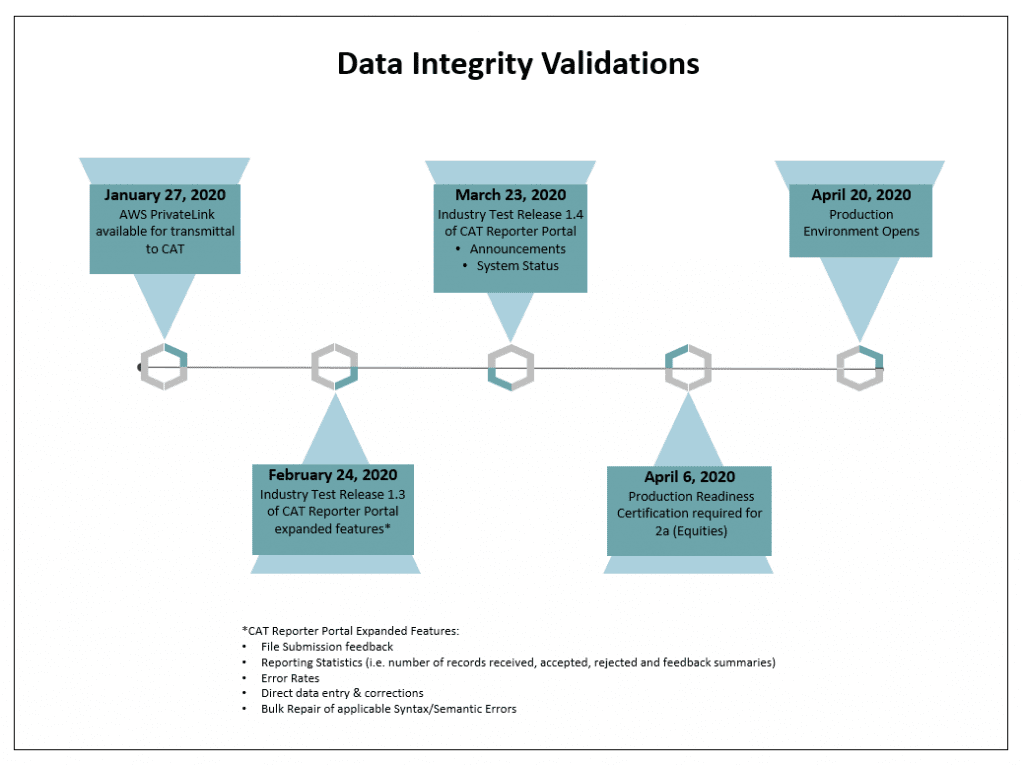CAT Testing – Don’t Lose Sight of Large Trader ID (LTID) and Phase 2c Deadlines
By Ralph Magee
Subscribe to our original industry insights
Many broker-dealers are in the process of preparing for access to the CAT reporting environment. They are making sure data transmission lines are implemented and functioning correctly, evaluating data requirements and ensuring which data will be produced by which technology provider (where appropriate), and performing linkage testing to clarify ALL of their trade flow to ensure all required data is captured for reporting. Some firms are also employing an external project manager or third-party vendor to keep this project on track.
As firms move forward with these tasks, there are two additional approaching phased implementations for CAT reporting that firms need to focus on to develop internal business plans, as well as required updates to firm policies and procedures.
Those two topics are Large Trader ID (LTID) and Phase 2c:
Large Trader ID (LTID)
Phase 3 of the Large Trader Implementation plan for broker-dealers is now going to be incorporated into the CAT infrastructure, rather than the original plan to report through the Electronic Blue Sheet (EBS) platform. Broker-dealers will be required to attach all existing LTIDs or ULTIDs to reported firm designated IDs (FDIDs) by April 2021.
Firms should begin by analyzing the population of potential LTIDs across their entities and businesses to ensure they have methods to retain and report LTIDs through their CAT reporting process. Firms are also encouraged to create an ongoing process to continually review and update new LTID clients.
Phase 2c
The final requirements for Phase 2c will be published by the end of January 2020. Phase 2c technical specifications are expected to outline reporting requirements for the following:
- Linkages for Representative Orders
- Sub-account allocations
- Rejected External Routes
- Internal Route modifications and cancels
- Special handling instructions on Route Reports
- Quote ID on trade events
- Order effective times
- Cancellations or modifications to orders received or originated after the execution of the order
Even though firms are in the throes of Phases 2a/2b right now, it will be important to stay on top of the allocation requirements and determining the ability of their current systems and processes to meet reporting requirements.
Oyster can help you assess how your firm is positioned for CAT readiness, manage your requirements assessment and implementation phases, interface with your own technology providers, and assist you in determining what and how your technology providers will report for you. We can also assist in testing data scenarios and data linkage, as well as creating an error repair process. Firms can also leverage Oyster’s testing tools to gather and analyze reported data and errors. Don’t jeopardize your business by not understanding the latest regulatory news. Click here to learn our current views on this topic, or for a consultation.




